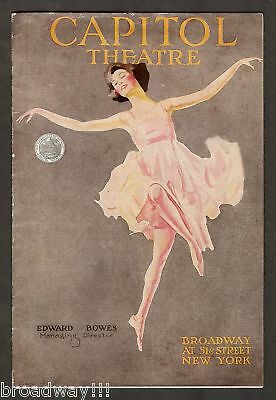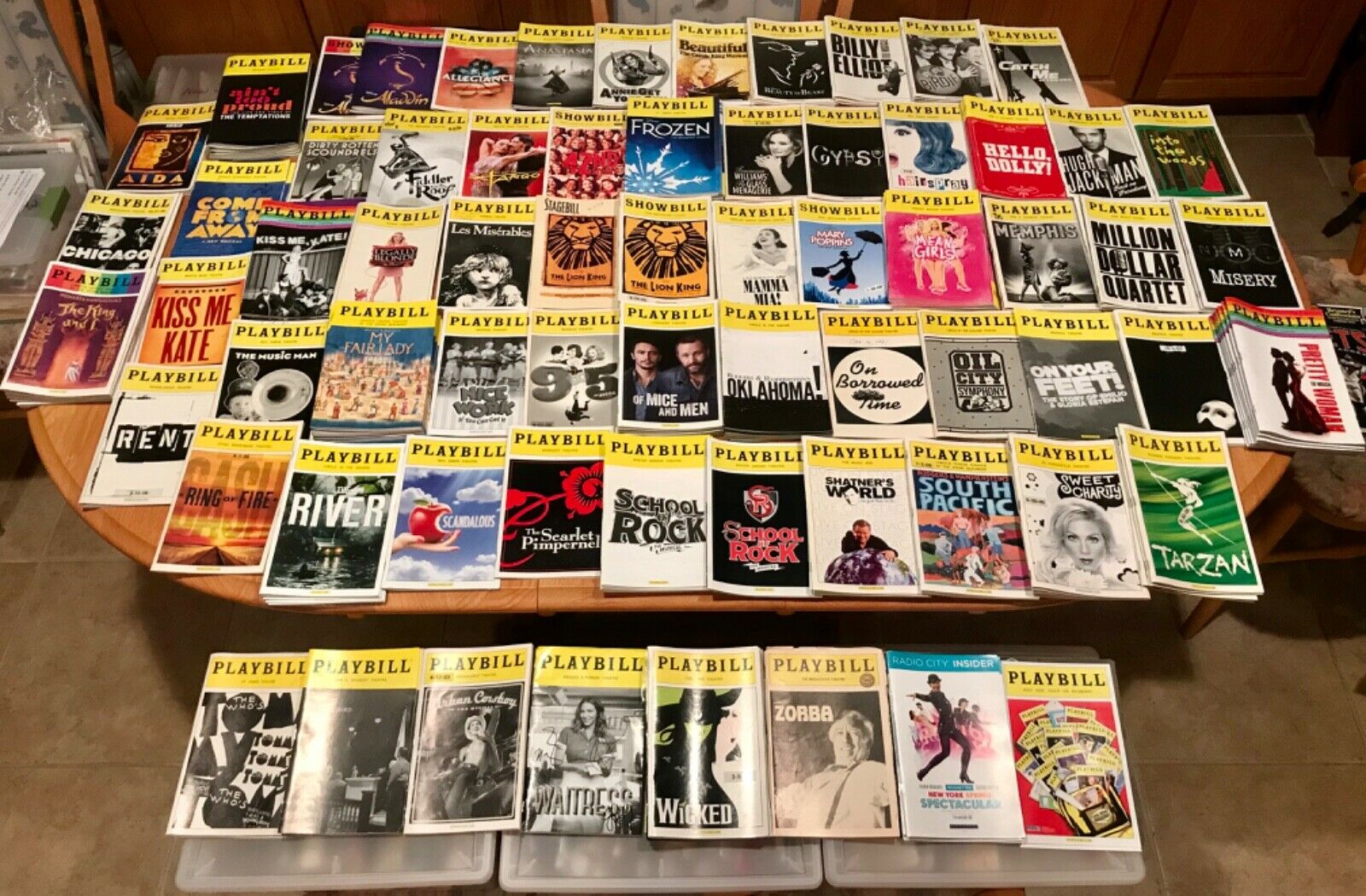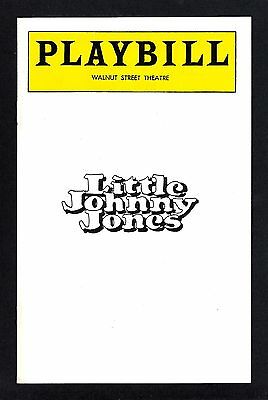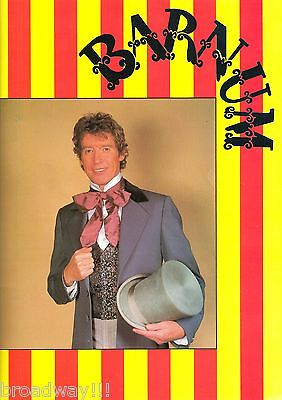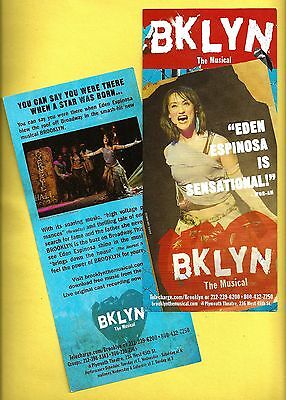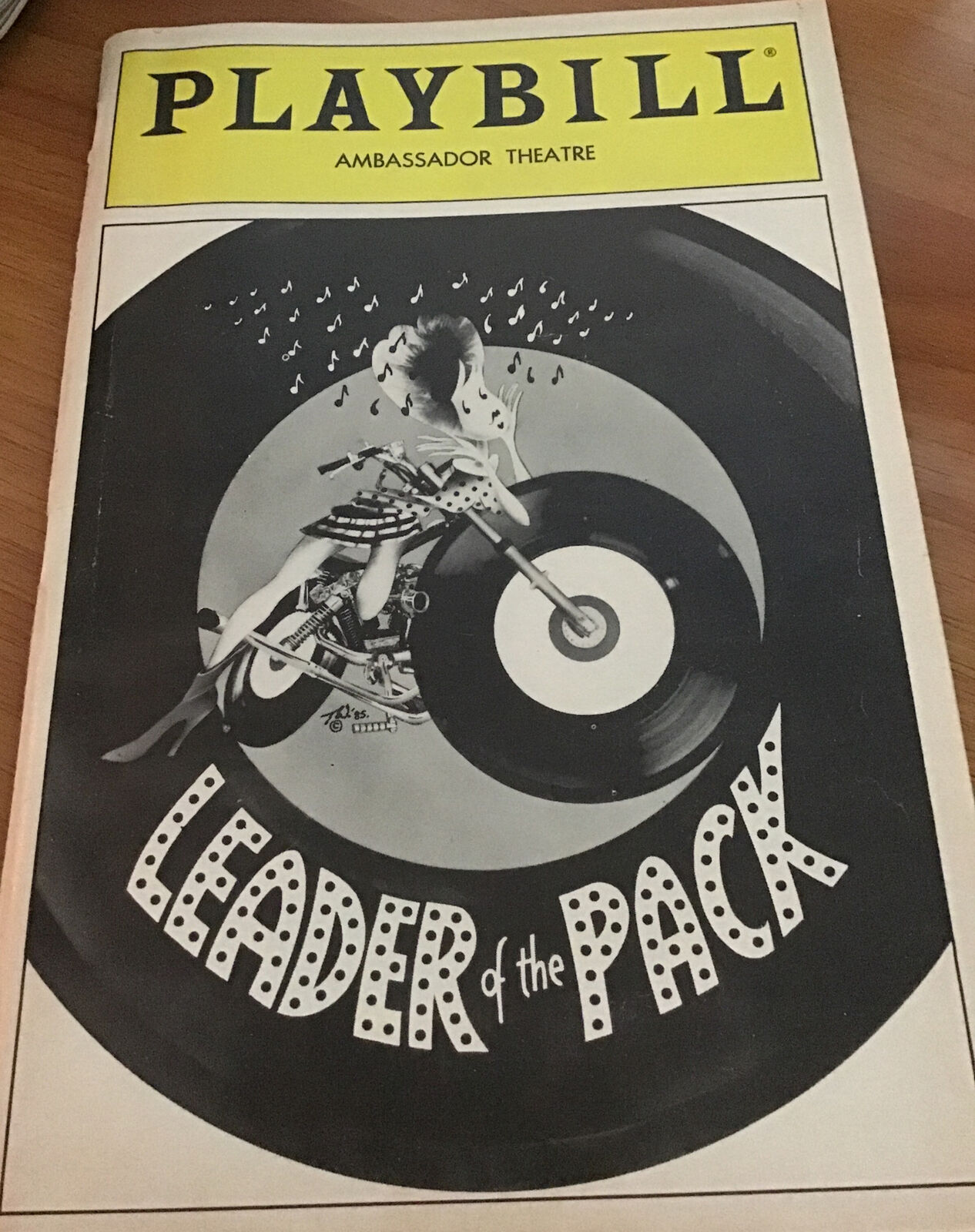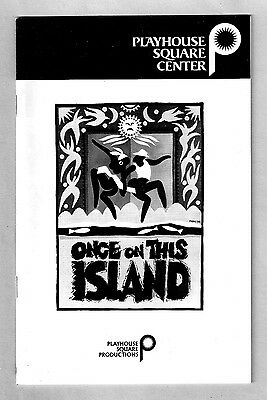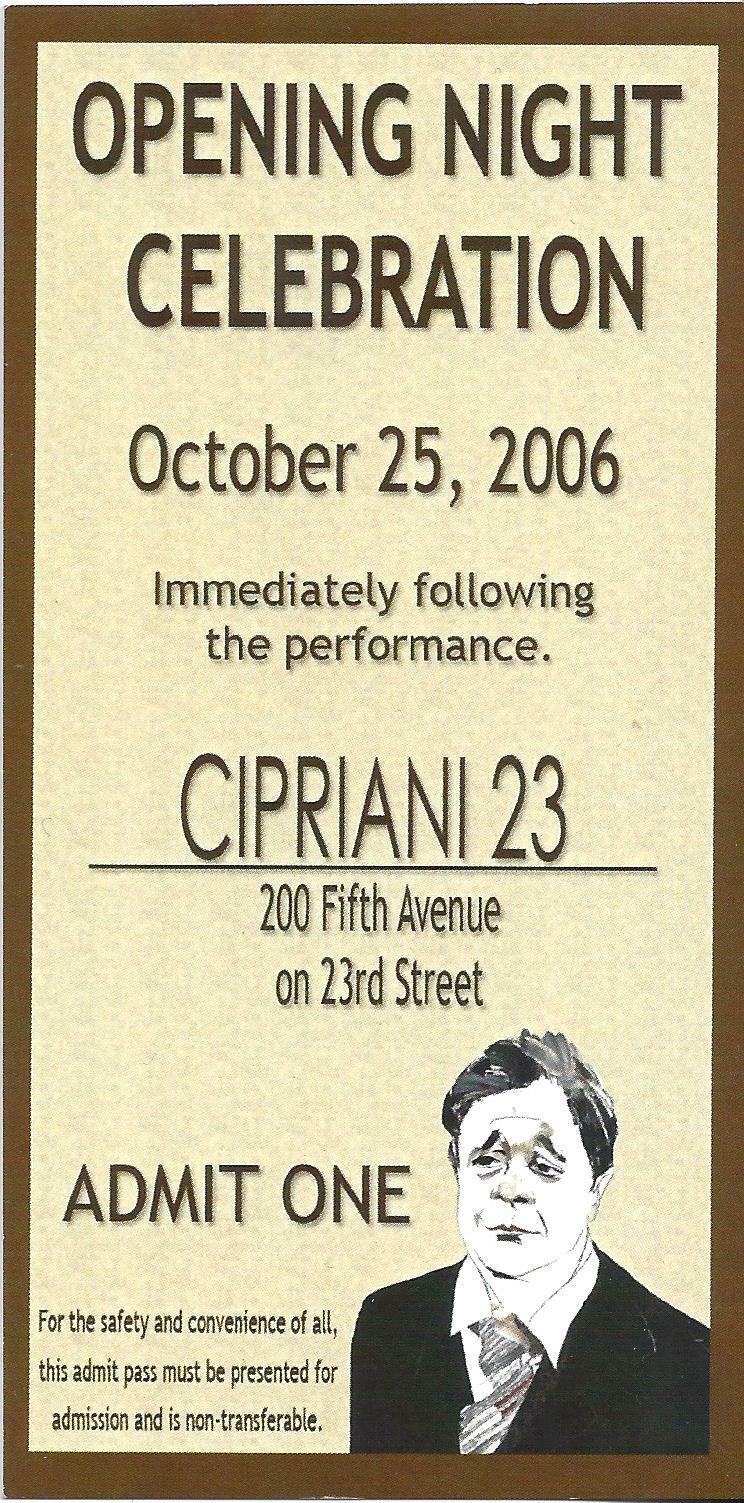-40%
George Gershwin's "SWANEE" (Debut) Demi Tasse Revue 1919 Capitol Theatre Program
$ 264
- Description
- Size Guide
Description
This is a rare November 16th, 1919 program (playbill) from the new CAPITOL THEATRE, "The World's Largest Theatre" on Broadway at 51st Street in New York City ..... The featured stage production on the theater's inaugural bill was NED WAYBURN's "DEMI TASSE REVUE" which introduced GEORGE GERSHWIN's first hit song, "SWANEE" sung by Muriel De Forrest and a second song, "COME TO THE MOON" performed by Paul Frawley and Lucille Chalfant ..... Historical Background: Though most often associated with singer AL JOLSON, the popular song "SWANEE" was written for therevue
Demi-Tasse
, which opened at New York's Capitol Theater. Irving Caesar and George Gershwin, who was then aged 20, claimed to have written the song in about ten minutes riding on a bus in
Manhattan
. It was written partly as a parody of
Stephen Foster
's
"
Old Folks at Home
". It was originally used as a big production number, with 60 chorus girls dancing with electric lights in their slippers on an otherwise darkened stage. The song had little impact in its first show, but not long afterwards Gershwin played it at a party where Al Jolson heard it. Jolson then put it into his show
Sinbad
, already a success at the
Winter Garden Theatre
,
and recorded it
for
Columbia Records
in January 1920.
"After that,"
said Gershwin,
"Swanee penetrated the four corners of the earth."
. The song was charted in 1920 for 18 weeks holding the No. 1 position for nine. It sold a million
sheet music
copies, and an estimated two million records. It became Gershwin's first hit and the biggest-selling song of his career; the money he earned from it allowed him to concentrate on theatre work and films rather than writing further single pop hits.
Arthur Schwartz
said:
"It's ironic that he never again wrote a number equaling the sales of Swanee, which for all its infectiousness, doesn't match the individuality and subtlety of his later works."
Jolson recorded the song several times in his career, and performed it in the movies
The Jolson Story
(1946),
Rhapsody in Blue
(1946), and
Jolson Sings Again
(1949). For the song's performance in
The Jolson Story
, Jolson, rather than actor
Larry Parks
,
appeared as himself, filmed in long shot. Although usually associated with Jolson, "Swanee" has been recorded by many other singers, most notably
Judy Garland
in
A Star Is Born
. (Reprinted in part from Wikipedia.) ..... The current bill also included DAVID BELASCO in the film "A STAR OVER NIGHT" and Select Pictures' "THE UNDERCURRENT" starring GUY EMPEY. Among the cast of the "DEMI TASSE REVUE" were MURIEL DE FORREST, BLOSSOM McDONALD, CECILIE CULLEN, HAZEL WEBB, ANNA POULSON, EFFIE ALLEN, WALTER BAKER, FRANK NORTON, JACK GERARD, JAMES McKENZIE, ETHEL RUSSELL, IRENE EARLE, ETHEL MAGLIN, HENRIETTA WALL, RAY HARTIGAN, WILLIAM SHELLEY, JOE MILLER, MACK WILLIAMS, LUCILLE CHALFANT, PEARL REGAY, PAUL FRAWLEY, JIM TONEY, WILL CRUTCHFIELD, RUTH HOFFMAN, PEARL BAILEY, MAE WHITNEY, HAZEL DARE, DOROTHY MILLER, PARISH & PERU, CASS FREEBORN and MYRA EVANS ..... Side Note (1): GEORGE GERSHWIN (1898 – 1937) dropped out of school at age fifteen and found his first job as a
performer, "
song plugger
" for Jerome H. Remick and Company, a publishing firm on New York's
Tin Pan Alley
, where he earned a week. Gershwin played newly published songs for prospective customers and soon began to write his own. He then decided he wanted to move on to work in musical theatre on Broadway, first working as a rehearsal pianist and soon becoming recognized as a composer. In 1919 he scored his first big national hit with the song "
Swanee
"
with words by
Irving Caesar
. The same year he wrote his first Broadway score ("La, La, Lucille") and had a contract with a music publisher with many songs in print. He was not yet twenty-one years old. In the early 1920's Gershwin frequently worked with the lyricist
Buddy DeSylva
.
Together they created the experimental one-act jazz opera
Blue Monday
set in Harlem, which is widely regarded as a forerunner to the groundbreaking
Porgy and Bess
. In 1924, George and his brother Ira Gershwin collaborated on a musical comedy
Lady Be Good
,
which included such future
standards
as "
Fascinating Rhythm
" and "
Oh, Lady Be Good!
". This was followed by
Oh, Kay!
(1926);
Funny Face
(1927);
Strike Up the Band
(1930);
Girl Crazy
(1930), which introduced Ethel Merman and the standard "
I Got Rhythm
"; and
Of Thee I Sing
(1931), the first musical comedy to win a
Pulitzer Prize
. In 1924, Gershwin composed his first major classical work,
Rhapsody in Blue
for orchestra and piano. It was orchestrated by
Ferde Grofé
and premiered by
Paul Whiteman
's concert band in New York. It proved to be his most popular work. His most ambitious composition was
Porgy and Bess
(1935). Gershwin called it a "folk opera," and it is now widely regarded as one of the most important American operas of the twentieth century. Based on the novel
Porgy
by
DuBose Heyward
,
Porgy and Bess
contains some of Gershwin's most sophisticated music. Even the "set numbers" (of which "
Summertime
", "I Got Plenty o' Nuttin'" and "
It Ain't Necessarily So
" are well known examples) are some of the most refined and ingenious of Gershwin's output. Early in 1937, Gershwin began to complain of blinding headaches and doctors discovered he had developed a type of cystic
malignant
brain tumor. It was in
Hollywood
,
while working on the score of
The Goldwyn Follies
,
that he collapsed. He died on July 11th, 1937 at the age of 38 at Cedars of Lebanon Hospital following surgery for the tumor. A memorial concert was held at the Hollywood Bowl on September 8th, 1937 at which
Otto Klemperer
conducted his own orchestration of the second of Gershwin's
Three Piano Preludes
. Gershwin received his sole
Academy Award
nomination, for
Best Original Song
, at the 1937 Oscars, for "
They Can't Take That Away from Me
"
written with his brother Ira for the 1937 film
Shall We Dance
.
The nomination was
posthumous
; Gershwin died two months after the film's release. (Reprinted in part from Wikipedia.)
..... Side Note (2): Director NED WAYBURN (1874 - 1942) was a
choreographer
instrumental in the creation of the legendary "Ziegfeld Follies"
.
He was born in
Pennsylvania
but spent much of his childhood in
Chicago
where he was introduced to theater and studied classical piano. At the age of 21, he abandoned his family’s tradition of manufacturing and began teaching at the Hart Conway School of Acting in Chicago. After leaving the school, Wayburn spent many years in theatre staging shows for various producers. He worked with such teams as
William Hammerstein
and
Oscar Hammerstein
,
and
Marc Klaw
and
A.L. Erlanger
.
In 1906, he began his own management group called the Headline Vaudeville Production Company. Through his own firm he staged many feature acts, while collaborating with other producers such as
Lew Fields
,
William Ziegfeld
and the Shuberts. In 1915, he began working with
Florenz Ziegfeld
on
the "
Ziegfeld Follies
". Wayburn’s choreography was based on five techniques:
musical comedy
,
tapping
and
stepping
,
acrobatic
work, toe specialties, and exhibition ballroom. As a child, he was captivated by
Minstrel shows
and recreated them in many of his works. Formation symmetry was common in minstrel shows, as well as parade. Wayburn used Minstrel style costumes and makeup in his show
Minstrel Misses
(1903).
His choreography was influenced by social dances of the time. His dancers moved in units of two or four, following popular trends. He took dances such as
tangos
,
the Turkey Trot, the
Grizzly Bear
,
the
Black Bottom
and the
Charleston
and recreated them for stage performances by using strong exaggerations of movement. Some of his well known shows were
Phantastic Phantoms
(1907),
The Daisy Dancers
(1906),
Havana
(1909),
The Passing Show
(1913), and most of the
Ziegfeld Follies
.
He created steps such as the “Ziegfeld Walk” and the “Gilda Glide”, and worked with well-known performers such as
Fred Astaire
,
Gilda Gray
,
Marilyn Miller
,
Ann Pennington,
Barbara Stanwyck
,
Clifton Webb
,
Mae West
,
Evelyn Law and
Fanny Brice
. Ned Wayburn was married for a time to one of the original "
Florodora
"
sextets; in that production and others on Broadway, she was billed as Agnes Wayburn. (Reprinted in part from Wikipedia.) ..... CREDITS ("Demi Tasse Revue"): Music by GEORGE GERSHWIN, JAMES HANLEY, ROBERT A. KING, MELVILLE GIDEON, DAVE STAMPER, LEO EDWARDS and HAROLD ORLOB; Lyrics by IRVING CAESAR; NED WAYBURN, RENNOLD WOLF, JAMES HEARD, LOU PALEY and BALLARD McDONALD; Scenery designed by JOHN WENGER; Costumes designed by CORA McGEACHY and ALICE O'NEILL; Production Conceived, Choreographed, Staged and Directed by NED WAYBURN; Produced by EDWARD BOWES for the Capitol Theatre .....
DETAILS: The 20 page program measures 6" X 9" inches and includes full production credits, cast list, scenes, musical numbers and wonderful advertising from several of Hollywood's motion picture companies including an ad for United Artists Corparation featuring MARY PICKFORD, CHARLIE CHAPLIN, DOUGLAS FAIRBANKS and D.W. GRIFFITH (shown in the ninth scanned image) ..... CONDITION: With the exception of light edge wear, this rare program is in excellent condition and will make a wonderful addition to the collection of any musical theatre aficionado or historian. This item will be carefully packaged in a protective, carded sleeve and backed by stiff cardboard ..... SHIPPING DISCOUNTS: Check my "Other Items" for additional rare Broadway playbills and other theatre related memorabilia. Shipping discounts are available for multiple purchases when all items are combined into a single payment. Please wait for a revised invoice before sending payment ..... THANKS !!!
Pay me securely with any major credit card through PayPal!
